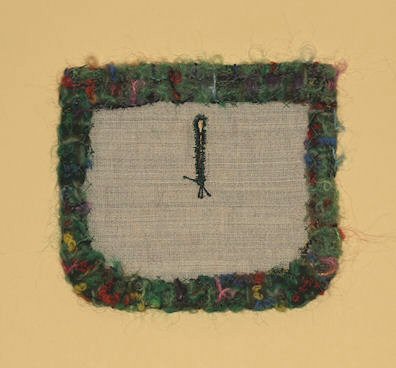
by Kathryn Brenne

Look through magazines and online fashion sites for pocket inspiration. If you are full in the bust you may wish to have only lower pockets or perhaps move the upper pockets to sit just above the lower pockets. Pockets are hand stitched to the garment once the garment is almost finished. I drafted my own pocket pattern for my sample jacket. The small pockets are 5" wide by 4 1/2" deep. The large pockets are 6" wide by 5 1/2" deep. They have trim applied to the upper edge and a working buttonhole. The pockets are backed with lightweight hair canvas to help them hold their shape.
Thread-trace the finished stitching line of the pocket. Pin the hair canvas to the pocket. Tack-stitch the hair canvas to the fabric along the thread tracing lines. Make a buttonhole. Apply trim. Turn back the edges of the pocket along the fold lines. Catch-stitch the edges to the hair canvas . Make a Spanish snap buttonhole in a square of lining fabric, which is 3/4" bigger all around than the pocket. Position the Spanish snap buttonhole to align with the hand-worked buttonhole on the front of the pocket. Turn under the edges of the lining so that they are slightly inside the finished edge of the pocket. Trim the lining as needed in order to get it to lie flat. Baste the lining in place and fell-stitch to hold. Baste pockets to the garment. Fell-stitch the pockets to the garment with tiny stitches. If the pockets are going to be used, do two rows of stitching to reinforce the pocket. Pockets should look like they are floating on the garment rather than being nailed down.

Interfacing is tack-stitched to the pocket.

Edges are catch-stitched to the interfacing, hand worked buttonhole is made.

